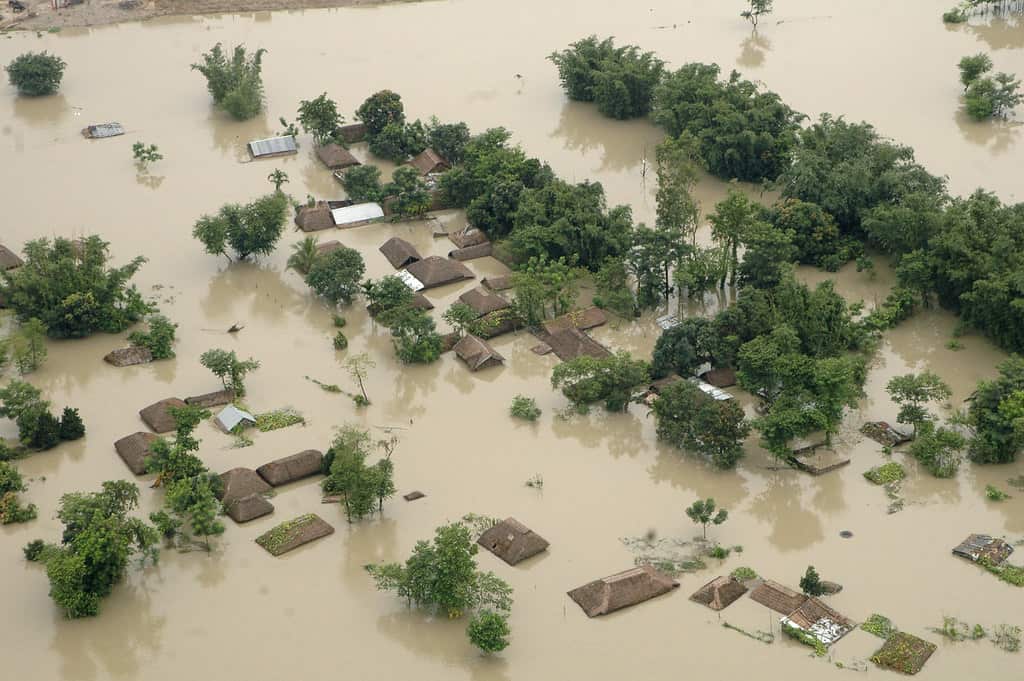The recent floods caused heart-wrenching destruction of life and livelihoods across the country. Also, the national capital faced heavy rains which caused many adverse consequences. Further, Andhra Pradesh, Telengana, Bihar and Odisha are also battling heavy rains and crop loss.
Andhra Pradesh Floods
The recent floods affected both east and west Godavari districts significantly. Following the release of 20 lakh cusecs water from the Dowleshwaram Barrage, the floods destructed 170 villages in the East Godavari district. On the other hand, the West Godavari districts that delinked from Telengana and merged with AP in 2014 also suffered from flooding.
The collector of West Godavari district, R Muthala Raju reports that all the 30 districts have been affected. A Mohammed Imitiaz, along with the district SP Ravindra Babu inspected the flood situation at Lingala village. And, they appreciated the effort of the officials who helped reduce the loss of life. Subsequently, the National Disaster Relief Force teams are evacuating all vulnerable groups. Also, he mentioned that all affected people received drinking water.
According to D Muralidhar Reddy, the collector of the East Godavari district, the floods affected 161 villages in 13 districts. To tackle that, 63 relief camps have been opened. Also, he highlights that boats were set up for ferrying people. And, everyone received nutritious food in the medical centres. The damages to the agricultural crop are yet to be assessed. However, he says that loss estimation will be only after the flooding subsides.
Floods in Telangana
Warangal and Khammam are the worst affected regions in the state. Fortunately, the heavy rains halt after wreaking havoc for the past couple of days. However, the flood water hasn’t drained out yet and thus, rescue operating are continuing in the affected districts. For instance, the Disaster Response Force of Greater Hyderband took 3,500 people to safety by helping them reach 13 relief centres. Also, many teams from the NDRF deployed in other areas of the state helped civilians during this worrisome time.
One significant consequence from the flooding has been the massive crop loss and loss of personal and private property. This will have an impact on the livelihoods of people in the state.

Continuous Rainfall in Odisha
The riverside villages- Rajkanika, Pattamundai and Aul block of the Kendrapara District face the threat of flooding after incessant rainfall across the state. Also, the agricultural land in many villages flooded and submerged in water. On a positive note, the Pattamundai BDO Bharat Chandra Parida says that enough ration is available in this time of need. Further, powerboats help people reach relief camps quickly.
The most affected are the farmers who recently planted saplings. The district emergency officer Sambeet Satapathy said that the district chief agricultural officer is yet to submit a report after assessing the crop loss in the districts.
10 Districts in Bihar Submerged
Initially, the good rainfall brought happiness to farmers. However, now, the excessive rainfall resulted in destructive floods. Further, farmers had gone for the early sowing of seeds because of the suitable climatic conditions. Accordingly, paddy, the most imported crop in Bihar during the Kharif season, was sowed. But unfortunately, crops in almost ten districts have submerged completely.
The assistant professor at Dr Rajendra Prasad Central Agricultural University, Abdus Sattar, says that standing paddy in low lying areas are damaged due to prolonged accumulation of water. Further, he mentions that the maize crop, being water-sensitive, might also face stunted growth.
Being optimistic, Sudhashanu Kumar, a farmer from Nayanagar village, mentions that a standing paddy can survive 5-7 days with accumulated water. Further, he notes that this will reduce irrigation pressure. Additionally, he concludes that farmers are expecting a good yield despite the current situation.
Assam Farmers Suffer First From Pandemic, Now Floods
The chairman of India’s Tea Board, Prabhat Bezboruah, said that floods had damaged many tea gardens in Assam. In the beginning, lack of labour was the central issue affecting cultivation. Now, their worries have increased because of flooding. Additionally, the tea prices have shot up because of the restrained supply. Further, Sujit Patra, the Secretary at Indian Tea Association, mentions that production costs have also shot up. So, many farmers cannot survive unless the price continues at this current level.
Further, the floods affected 29 lakh people so far from 26 districts in the state. Many health care workers are actively working to help people. However, officials worry that the likelihood of corona transmission in relief centres is high. Contrarily, some feel that dealing with COVID-19 for the past few months has strengthened the health care sector. Therefore, they are ready to handle the situation.
In all, several states across the country are facing disastrous floods. And that has indeed destroyed life and resulted in massive crop loss. The total loss value of agricultural crop for farmers can be estimated only after the flooding subsides and evacuation measures are over.